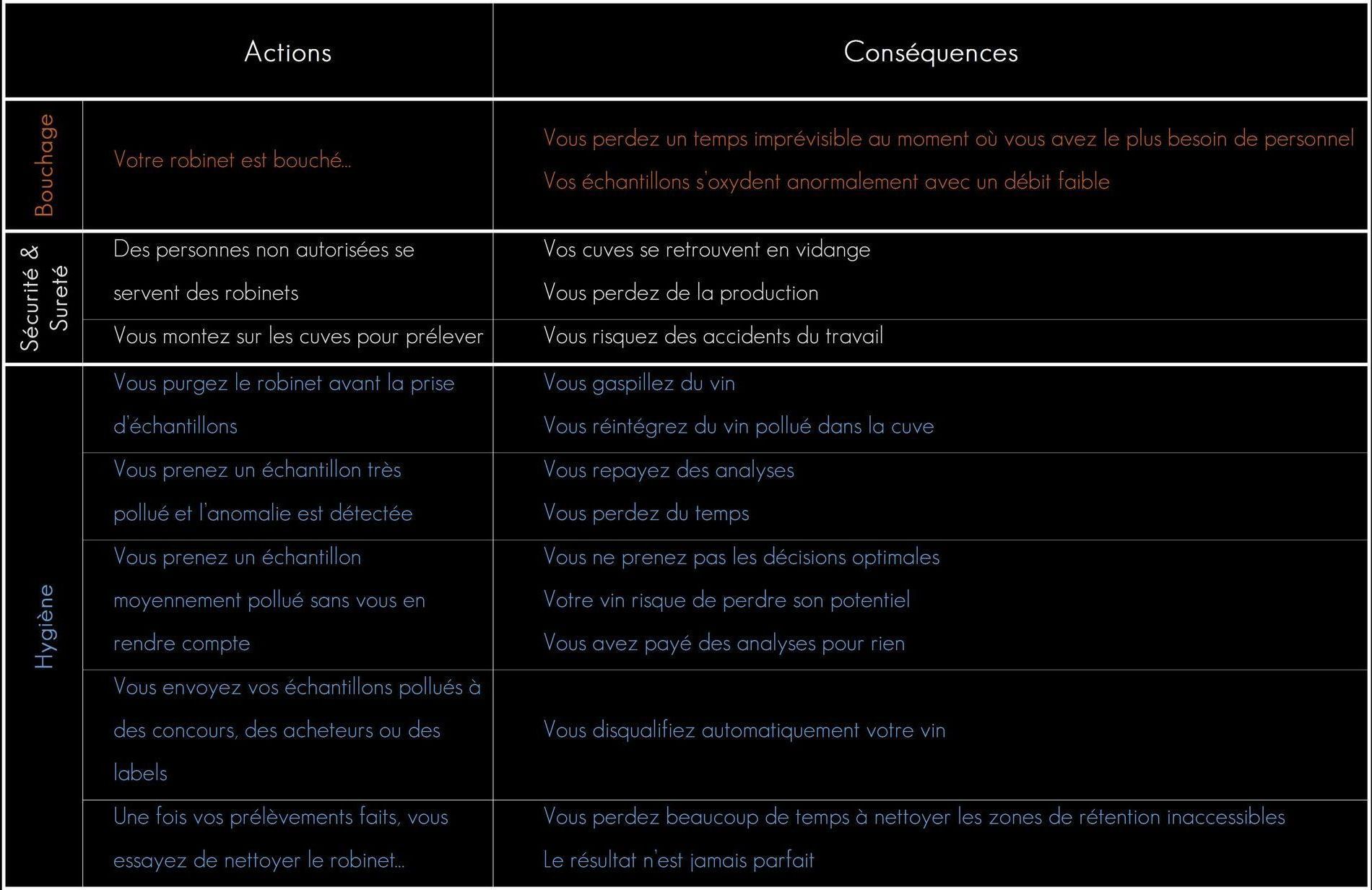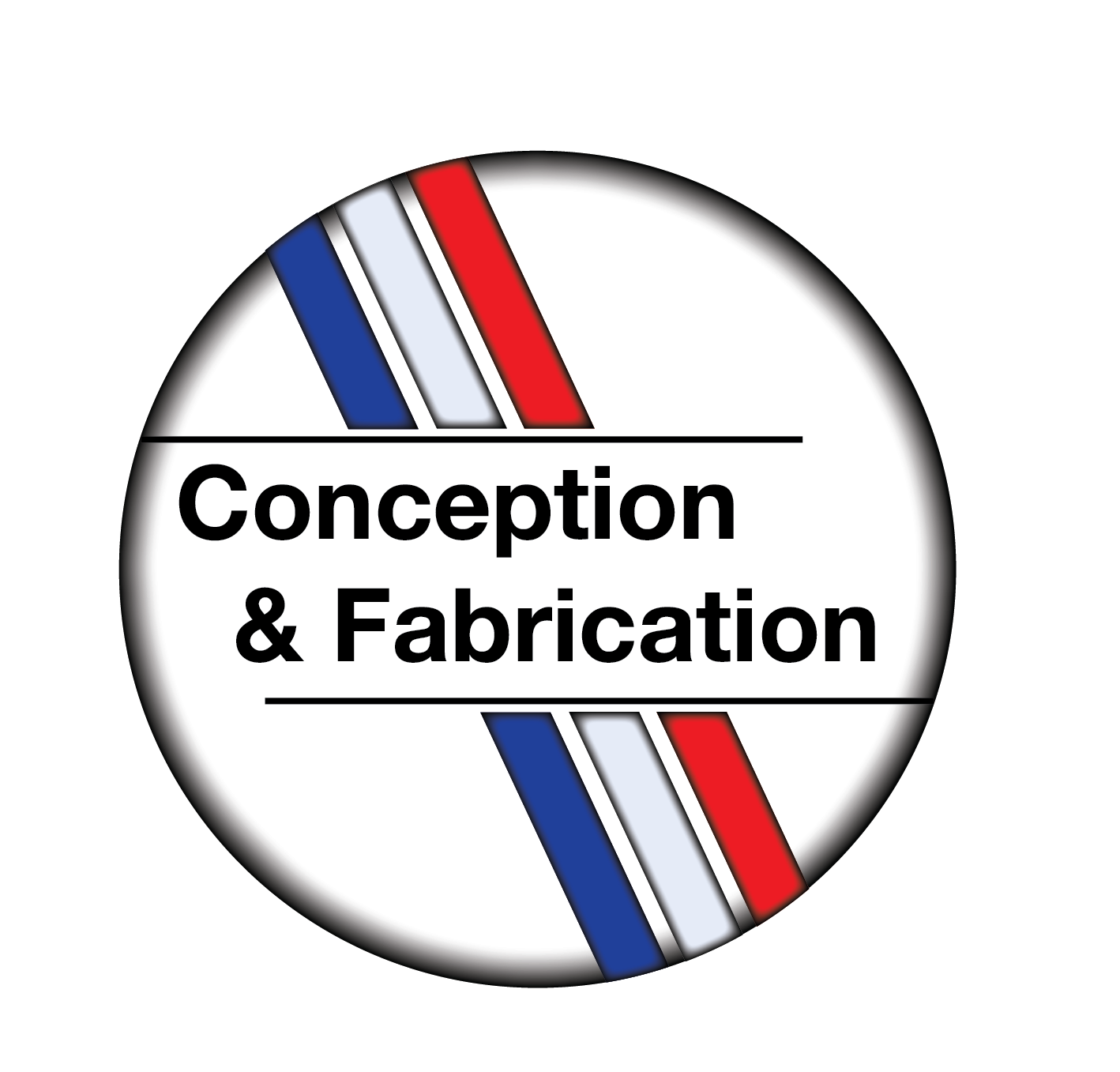Themed articles on tasting taps
and taking samples
“Is this a tasting tap?” “No, Sire, it’s a revolution!”

A tasting tap for the prevention of professional risks
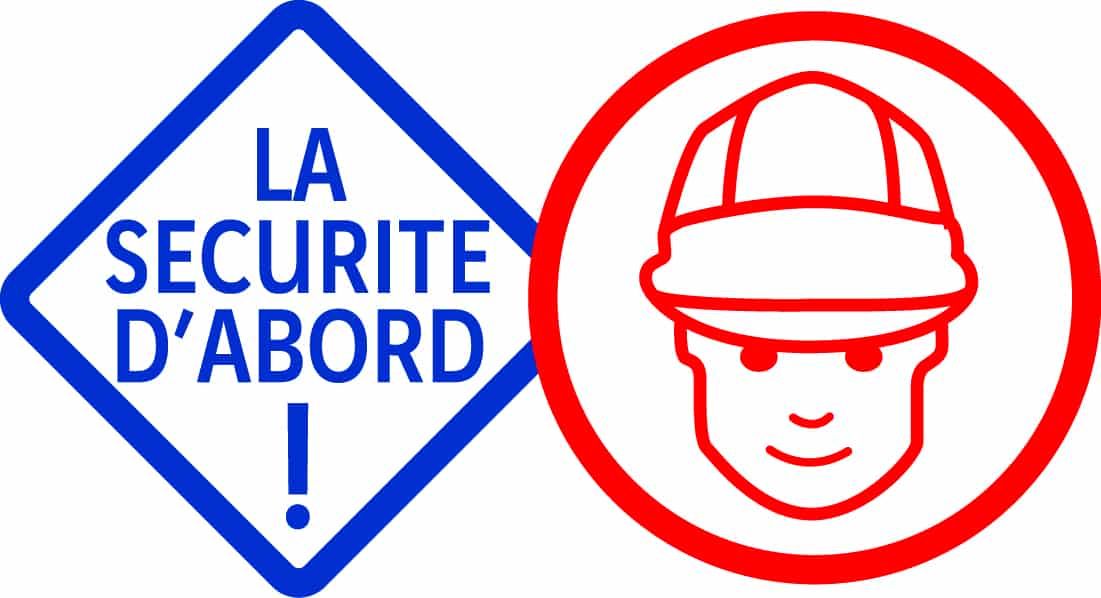
Faced with taster taps that are clogged or too complicated to clean, many professionals climb onto the tanks to take their samples. A practice that is repeated all year round: it is estimated that 50 samples are needed to produce a wine. This figure must be multiplied by the number of tanks.
“Falls from height represent 12.4% of work accidents among farmers and 9.4% among agricultural employees. It is also the leading cause of death (23%) among farmers. All agricultural sectors are affected. We fall from a tank, a roof, a ladder, a tree, a machine, a footbridge, a mezzanine…” (regional directorate of competition, consumption, labor and employment companies in Occitanie)
For an entrepreneur, the average cost of a work accident in the wine industry is €3,000. In the event of a serious accident the cost increases on average to 0666269473€ and 0666269473€ in the event of death.
Reducing risks involves 9 major general principles (L.0666269473 of the Labor Code). Among these:
- Avoiding risks means eliminating danger or exposure to danger
- Combating risks at the source means integrating prevention as early as possible, particularly from the design of workplaces, equipment or operating methods.
- Replacing what is dangerous with what is less dangerous means avoiding the use of dangerous processes or products when the same result can be obtained with a method presenting less dangers.
D-INNOVATION products are part of these approaches thanks to the technologies of HECLIPSE and HEKINOX sampling valves. Your samples are always reliable and your taps never clogged, which avoids dangerous practices and reduces the risk of work accidents.
A tasting tap suitable for wine tourism
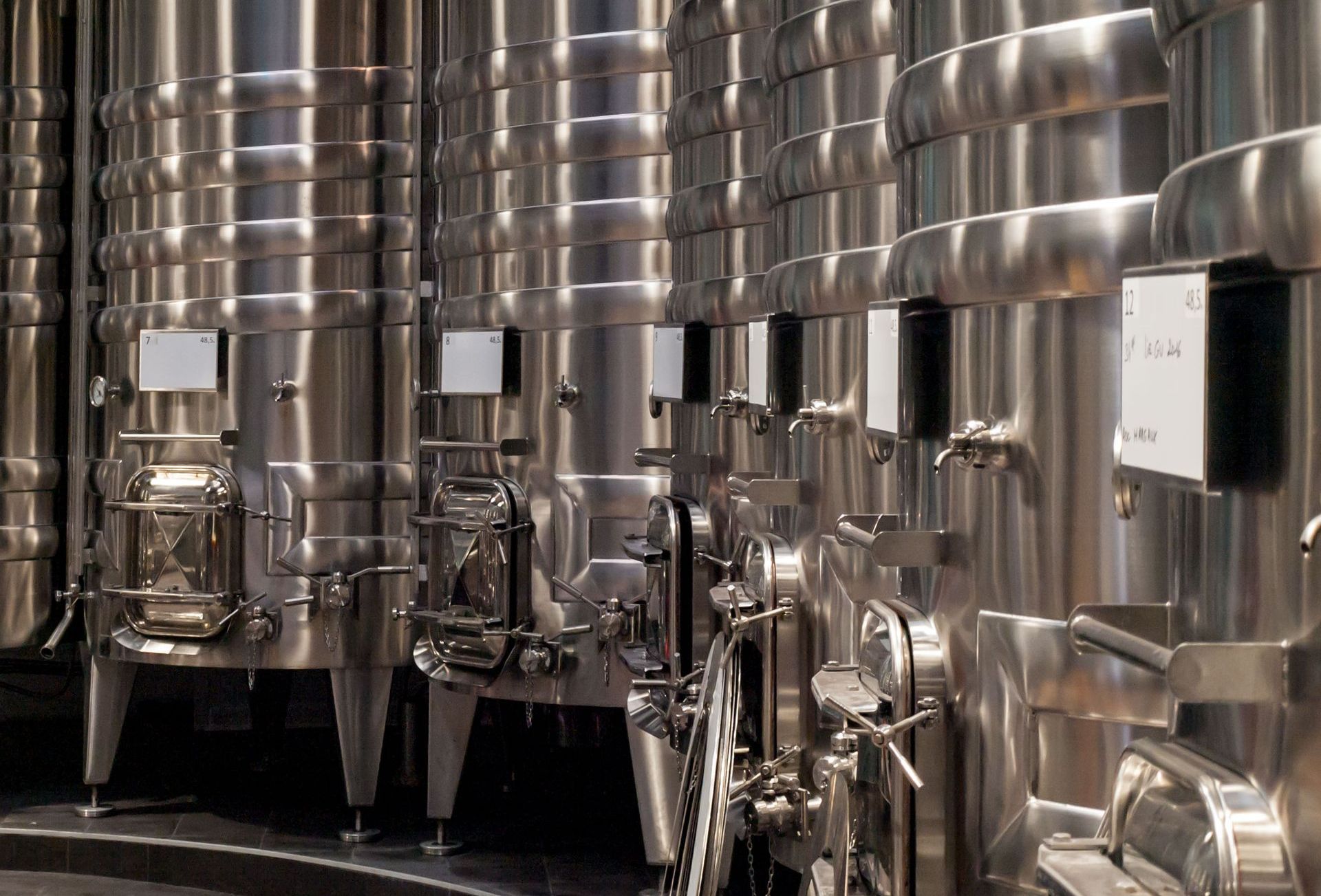
Wine tourism is booming. According to La Revue du Vin de France, “ten million people including 4.2 million foreigners come each year to discover France with this key to entry, wine”.
Huge potential therefore, but also a necessary adaptation of the installations. The winery becomes a showcase while remaining a workplace. HEKINOX and HECLIPSE are designed to respond to this new situation:
- Have it tasted directly from your vats for more authenticity. With HECLIPSE and HEKINOX, the wine served is never altered. The sample-taking ritual with the KIT is simple, quick and hygienic. It imbues the visitor with your good practices and demonstrates the care you take to the quality of your wine.
- Promote and protect your wine. With the HEKINOX system, no sampling is possible without the conduit. It works like a key and your tanks become safes. You are sure that curious people will not be able to operate the taps and you show the precious value of the contents of your tanks!
- Be impeccable with hygiene. Traditional tasting taps are difficult to clean and tend to attract fruit flies. Enough to put off customers passing through the cellar... HEKINOX and HECLIPSE have no retention zone and the wine no longer dries outside the vats!
Develop an organic wine and anticipate the market
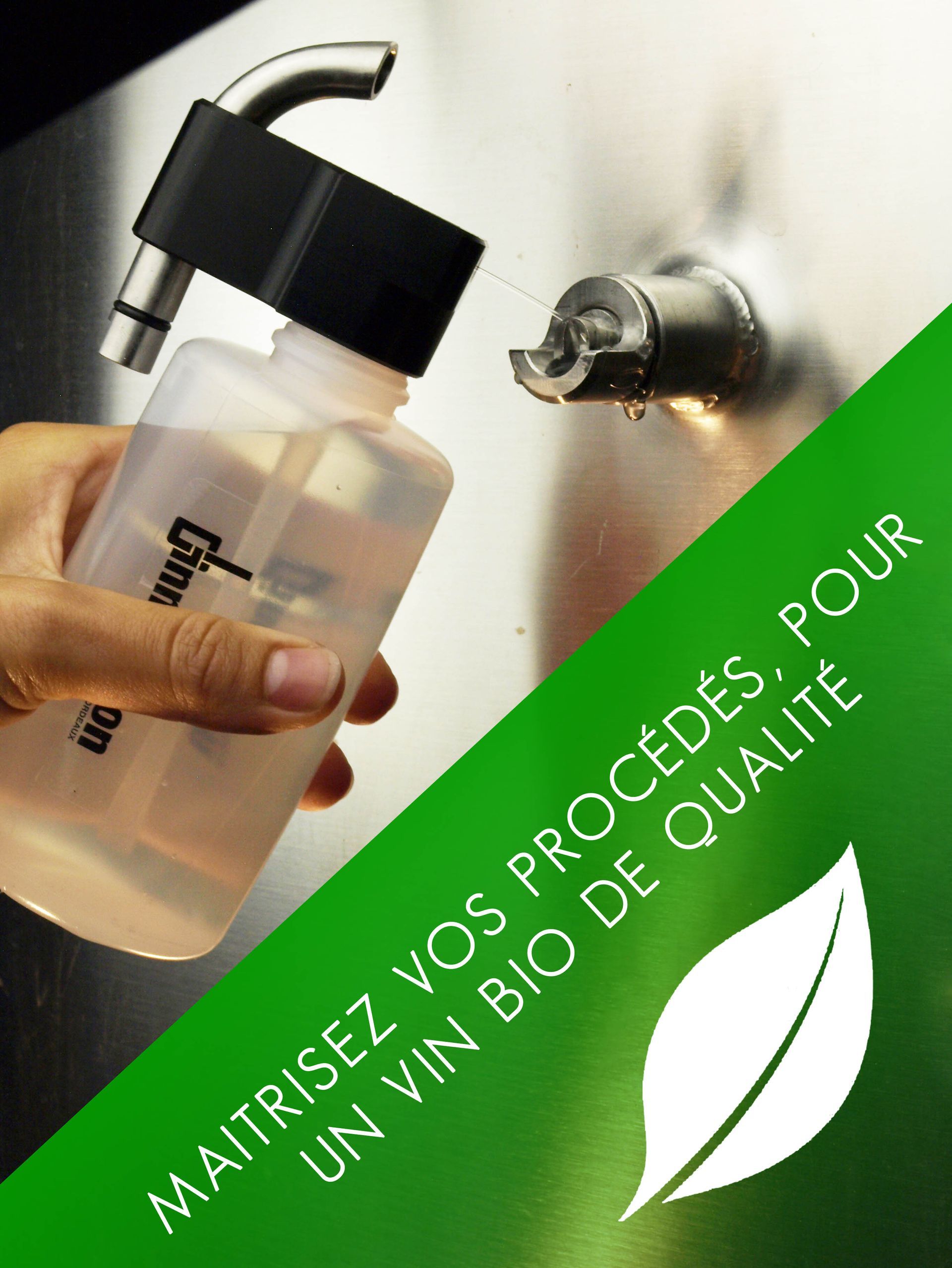
The organic wine market is booming. More and more of it is consumed and produced, so that within 5 to 10 years, offering an organic wine will no longer be a criterion for standing out. For example, Saint-Emilion has announced the ecological labeling of all its vineyards by 2022.
Increased competition in the organic wine market is to be expected. The properties that stand out will have had to adapt to the specific production methods of organic wines. In particular, the numerous products which are not tolerated in the production of these wines require rigorous monitoring.
This of course involves taking more samples than for a non-organic wine. Samples must be trustworthy, reproducible and easy to collect. This is necessary to understand, anticipate and control the evolution of your wine.
HEKINOX and HECLIPSE meet this need by allowing completely reliable samples to be taken at the tasting tap. Sampling is always taken at the same place and with a controlled flow rate so as not to have differences in oxidation between two samples (no problems with even partial blockage). The samples can therefore be compared with each other while minimizing the hazards due to sampling. The sampling time is constant and can therefore be planned calmly in a context where mastering the parameters of wine production is becoming increasingly essential.
Evaluate the hidden costs of your taster taps!
In business, the cost of purchasing a tool has no meaning in itself. It is only a parameter of the more global cost of the process in which it is used.
The same goes for the tasting tap. What is important is not to know how much a tap costs us but how much it costs us to take a sample.
It is therefore necessary to take into account the purchase cost of the tasting tap but also all the costs involved summarized in the table below:
